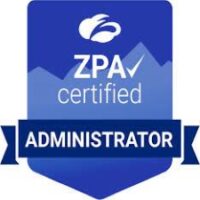Renewable energy technologies now form a key part of the modern electric grid. Most countries globally are investing in renewable energy generation to accelerate the move towards being carbon… Read more on Cisco Blogs
[[{“value”:”
Renewable energy technologies now form a key part of the modern electric grid. Most countries globally are investing in renewable energy generation to accelerate the move towards being carbon neutral. The following technologies are now considered mainstream and being deployed at some pace:
Onshore and offshore wind
Onshore solar farms
Onshore battery storage
Other renewable technologies are also being researched and developed (e.g. wave, tidal, other storage technologies), and we will start to see more innovative renewable energy deployments in the foreseeable future.
To deploy and operate these renewable technologies, often in harsh and remote locations, a secure and reliable network is required. This is where the Cisco Industrial IoT portfolio provides the secure foundation for the network.
Offshore wind farms are large infrastructure deployments with multiple locations. They generally consist of the following main building blocks:
Onshore substation
Offshore substation (platform offshore)
Offshore wind turbines (ranging from 50 to 300 turbines)
Onshore operations and maintenance offices
Offshore Service Operations Vessels (worker accommodation, offices, and workshops while offshore)
Cisco has developed a complete Validated Design (CVD) for these offshore wind farm projects in conjunction with various customers and suppliers. This enables customers (windfarm developers and/or operators) to have a blueprint solution during all phases of a project (from specification and procurement to deployment).
The solution includes networking infrastructure from the offshore wind turbine itself through the offshore platforms to the onshore WAN interface point and connectivity to the wind farm operators control center. Cybersecurity also forms a key part of the Validated Design. Providing segregation of critical and non-critical traffic, inspection of traffic, firewalling, and encryption services.
The Cisco CVD is modular to allow for varying wind farm sizes (i.e. design can flex to cope with increased number of turbines), provides resilient architectures to allow for fault conditions, and includes cybersecurity built in from the start.
Offshore wind farms are very challenging to deploy, and automation is a key component during the deployment phase. Cisco Catalyst Center provides a single platform allowing zero touch deployment of infrastructure (switch and routers) at Day 0 and the ongoing management of the network.
Additional use cases include Service Operations Vessel (SOV) connectivity using Cisco Ultra-Reliable Wireless Backhaul to provide high bandwidth connectivity while the SOV is offshore in the windfarm.
The Cisco Offshore Wind CVD provides the following benefits:
Pre-validated design and configurations
Product choices and validated firmware versions
Automation through plug and play capabilities in Cisco products
Centralized security policies including segregation of services
Modular designs to flex for bigger projects
Validated resilient topologies
Platform architecture to support existing and future devices
Validated QOS and security configurations
In summary, the offshore wind farm solution provides a proven and validated blueprint for connecting devices and production assets, improving industrial security, and improving data access and operating reliability. Following this best practice blueprint with Cisco market-leading technologies will help decrease deployment time, decrease risk, decrease complexity, and improve overall security and operating uptime.
Learn more
Check out the updated solution brief, design and implementation guides for the Offshore Wind Validated Design 1.1 here.
Read the ScottishPower Renewables case study.
“}]] Connecting highly distributed offshore wind resources requires an advanced communications infrastructure. Read More Cisco Blogs










